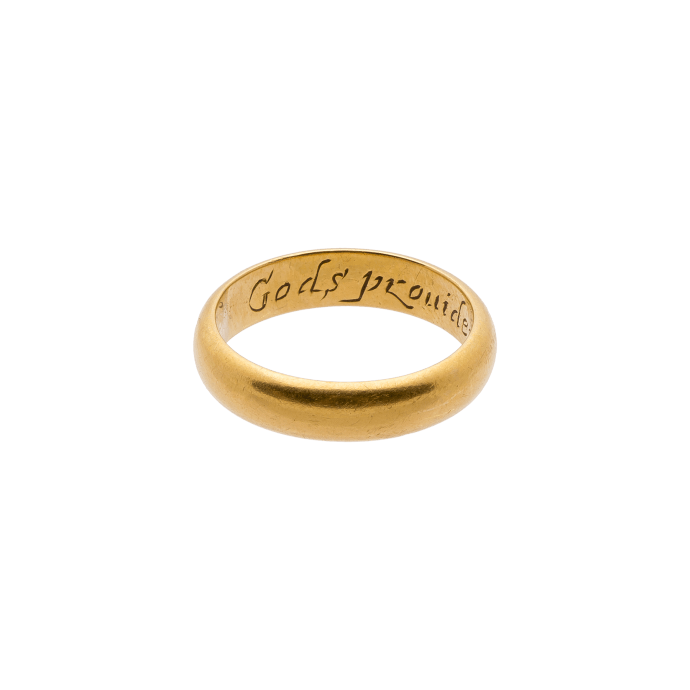




Description
In England the tradition of wearing a plain gold ring with amatory motifs or inscriptions as a pledge of matrimony dates back to the late medieval period. This continued to be favored well into the eighteenth century, if not later. Queen Mary I in 1554 and later in 1840 Queen Victoria chose to be wedded with a plain gold band. Popular, however, were the so-called ‘posy rings’, their name deriving from the term poésie or poetry, based on the engraved mottoes or inscriptions, either in prose or verse. These messages were often concealed inside the hoop and only known to the wearer and the giver. The exchange of rings between lovers often preceded the wedding ceremony as a symbol of consent of marriage to be contracted either inside or outside of a church setting. Inscriptions evoking religious sentiment suggest the ring was given to the bride in the Church symbolic of the sacred vows of marriage.
Description:
The plain gold band with D-section has on the interior the engraved inscription in italic lettering “God’s providence is our inheritance.” The ring shows traces of wear and is in good condition.
Literature:
Variants of this popular posy are cited by Joan Evans (Evans 1931, pp. 44-45) and the motto can be found as early as the sixteenth century, but more commonly in the seventeenth and eighteenth century; see examples in the Victoria and Albert Museum, London (Oman 1930, no. 682 with mention of one in the Norwich Castle Museum) and British Museum, London (Dalton 1912, nos. 1179-1181).
For a history of posy rings with a listing of various mottos, see Evans, 1931 and Anon., A Garland of Love: A Collection of Posy-Ring Mottoes, London 1907. For further information, see Dalton 1912, pp. 174 ff.; Scarisbrick 2007, pp. 74 ff., Taylor and Scarisbrick 1978, and Oman 1974, pp. 39 ff..